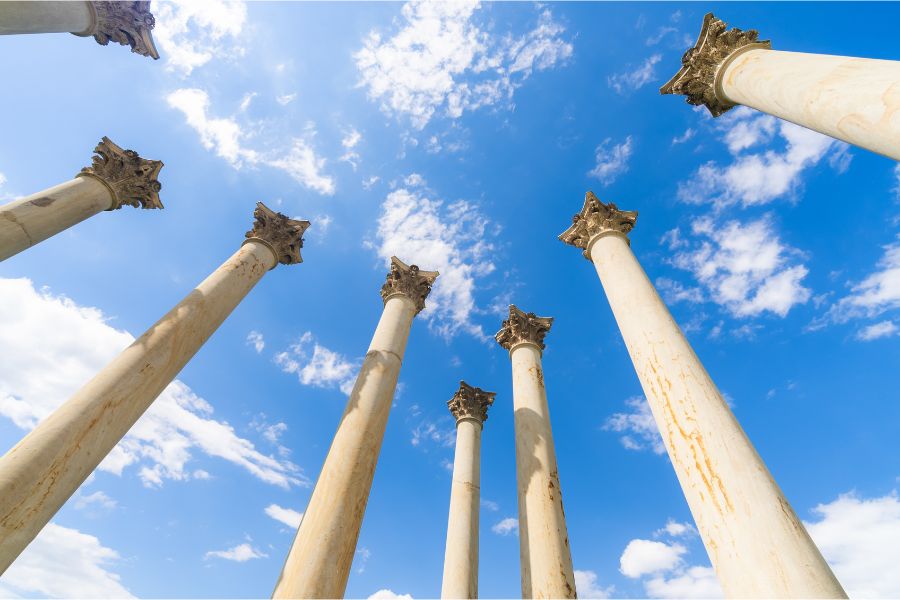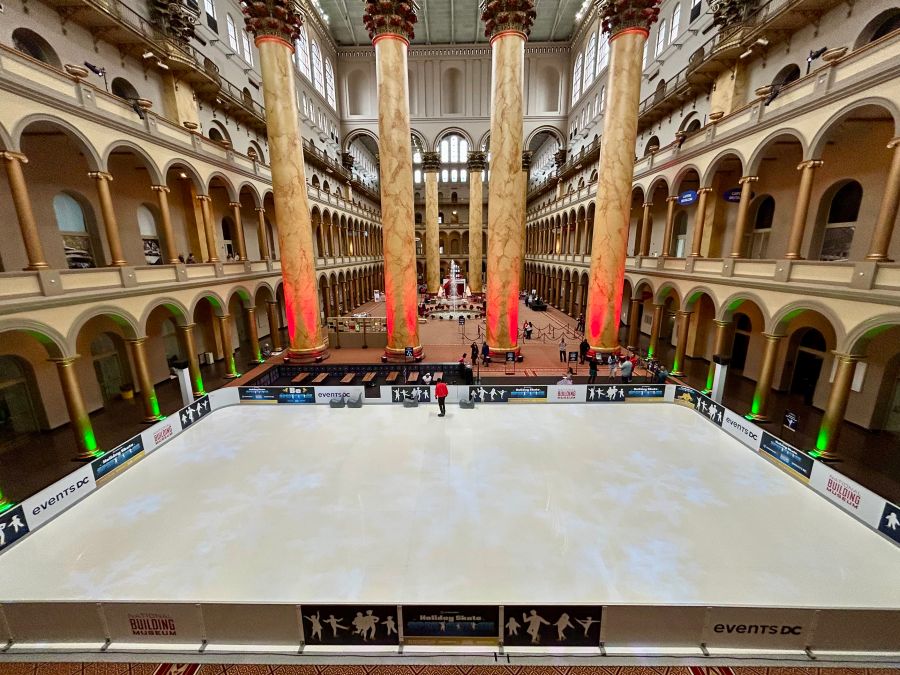
Explore breathtaking landscapes and one-of-a-kind plant collections with our guide to the best things to see and do at this free, 451-acre museum.
Tucked in Northeast DC, the U.S. National Arboretum offers a serene escape into nature, filled with botanical beauty, stunning history and iconic attractions like the Bonsai & Penjing Museum and the Capitol Columns. Whether you're looking for wintery walks, cherry blossoms, vibrant summer blooms or fall foliage, the free, living museum promises an unforgettable experience in every season.

What is the U.S. National Arboretum?
Established in 1927 by an act of Congress, the U.S. National Arboretum aims to increase the aesthetic, environmental and economic importance of landscape and ornamental plants. The attraction achieves this through gardens and exhibits, long-term botanical research and conservation of resources. The gorgeous, 451-acre property also offers miles of trails for walking or driving, and makes for a captivating visit at any time of the year.

Where is the U.S. National Arboretum? How do I get there?
The Arboretum is located at 3501 New York Avenue NE in Washington, DC. It's easy to reach by car, as the grounds are located approximately 10 minutes from the U.S. Capitol Building. Parking is readily available, or you can use Uber or Lyft.
Visitors can also arrive via Metrorail or Metrobus and plan their route using Metro's Trip Planner. Several bus routes make a stop right at the entrance.
Please note that the Arboretum’s R Street entrance is closed after 2 p.m. from Monday through Friday, so make sure to use the New York Avenue entrance if visiting at that time or later. Driving directions from numerous points in the DMV area are available on the Arboretum’s website.

When is the Arboretum open? Is it free?
Admission to the Arboretum and the museum is free of charge.
The grounds are open to the public from 8 a.m. to 5 p.m. every day of the year except Dec. 25. The popular National Bonsai & Penjing Museum, located within the Arboretum, is open from 10 a.m. to 4 p.m. every day except for federal holidays that fall from November through February.
During the summer, thanks to the nonprofit Friends of the National Arboretum, the park stays open until 8 p.m. (three hours past regular closing time), giving visitors the chance to experience one of DC’s most picturesque destinations in a new light.

What is there to see and do at the U.S. National Arboretum?
The Arboretum presents a stunning collection of plants, with each given its own display. One of the most popular is the Gotelli Conifer Collection, which showcases conifers that hail from a range of climates, including the Arctic and subtropical regions. Japanese maples, ornamental grasses and daffodils combine with the conifers to create an alluring array of colors. Make sure to stop in the gazebo, where you will have a full view of the Conifer Collection while resting. Dogwoods, azaleas, magnolias and more are among the other collections, and other major attractions include the National Bonsai & Penjing Museum and the National Capitol Columns.
What's in bloom at the National Arboretum? Can I see cherry blossoms?
In addition to being a favorite for cherry blossoms (see more prime viewing spots), the U.S. National Arboretum boasts a rich, year-round lineup of blooms, making it one of the best destinations for flower fanatics in the District. Don’t miss the azaleas, which line winding walking paths and create an enchanting springtime experience.
Browse our guide to the District's full lineup of flowers, complete with recommendations on where to find each variety.

What is the National Bonsai & Penjing Museum? Is it inside the Arboretum?
The National Bonsai & Penjing Museum is another notable feature of the Arboretum. The museum is a riveting collection of legendary miniature Japanese and Chinese trees. The Japanese art of bonsai goes back more than one thousand years, a practice of growing beautiful trees in artful containers. The art of penjing is an even earlier version of the same practice, with both providing a calming effect on the observer. You’ll learn of this fascinating art and its conservation elements as you are dazzled by these living sculptures and natural scenes. The trees take on new colors and blooms with each season, so it’s worth repeated visits.

What are the Capitol Columns?
No discussion of the Arboretum is complete without mentioning the National Capitol Columns. The permanent installation features 22 Corinthian columns that supported the east portico of the U.S. Capitol when it was built in 1828. Once the dome of the Capitol was completed in 1864, builders realized that the columns were not properly constructed to support the dome, creating an odd and unsettling visual. The strange aesthetic was not solved until 1958, and it took until the 1980s for the columns to find their resting place on the Ellipse Meadow in the Arboretum. Now, the site of the columns serves as one of the most beautiful (and Instagram-worthy) sights in the nation’s capital.
Are dogs allowed in the Arboretum?
Yes, pets are permitted on the grounds and must be leashed at all times. It's also critical that pet-owners do their part in protecting the Arboretum's flora, so please prevent pets from entering garden beds and be sure to clean up after them. Pets are not allowed in the Administration Building or in the National Bonsai & Penjing Museum.

U.S. National Arboretum
Are there events at the Arboretum?
Yes! Make sure to take note of the Arboretum’s events, which can include moonlit hikes, celebrations and educational programs.






